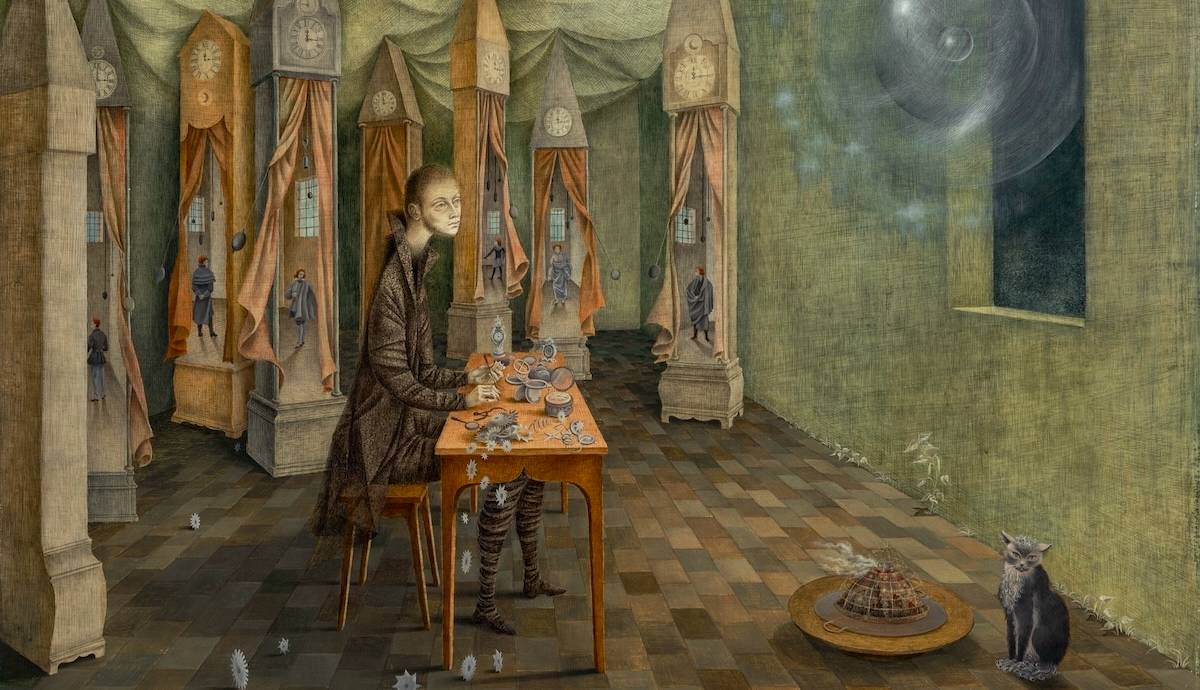
The heirs of modernist painter Piet Mondrian have filed a lawsuit against Kunstmuseen Krefeld, a German collective of art museums, located near Dusseldorf. The US-based heirs seek the recovery of four paintings by Mondrian estimated at $200 million.
The suit was filed on October 15, by the three children of American abstract artist Harry Holtzman, who aided Mondrian to escape to New York during WWII and was later named his sole heir. The three siblings are also the trustees of the “Elizabeth McManus Holtzman Irrevocable Trust”.
According to the lawyer of the Trust, the heirs first contacted the German museum in 2018. As initial attempts to reclaim the artworks failed, they decided to take legal action.
How Did The Paintings End Up In Kunstmuseen Krefeld?

According to the lawsuit, back in the 1920s, Piet Mondrian created eight paintings. At some point, he gave them as a loan to the major exhibition “Circle International. Painting and Sculpture” at the Kaiser Wilhelm Museum, now part of the Kunstmuseen Krefeld.
Although the paintings reached the museum for this specific purpose in 1929, the exhibition never happened. That is because the museum’s director, Max Creutz passed away before realizing the show.
Nevertheless, the museum kept the paintings. With Hitler’s rise to power, modernist artists like Mondrian were disregarded as “degenerate”. Very quickly, the Nazi regime turned from being critical of modernist art to seeking its destruction. Mondrian fled to London in 1938 and finally reached New York in 1940, with the help of his sponsor and friend Harry Holtzman.
Mondrian died in 1944 thinking he had lost his eight paintings forever. However, in a twist of fate, the paintings survived the Nazi art purge. How? They were not included in the inventory of the museum. Consequently, the directors of the Kaiser Wilhelm Museum never realized that Mondrian’s art was in the museum’s stores.
With the end of the World War and the collapse of the Nazi State, the museum resurfaced the paintings in 1947. However, the director at the time failed to notify Mondrian’s heirs. Instead, the museum sold four out of the eight paintings to obtain 30 new ones. The remaining four paintings appeared in the museum’s records in 1954.
Mondrian’s Heirs Claim The “Mondrian Four”

According to the Trustees’ lawyer, Herrick Feinstein:
“Kunstmuseen Krefeld engaged in a continuous policy or practice of deception to hide from the Trustees the paintings and information related to the paintings that might lead to their discovery; and this conduct prevented the Trustees from learning of their right, title, and interest in and to the paintings.”
The family learned of the painting’s existence in 2017 after hiring Monika Tatzkow, a German provenance researcher, and Gunnar Schnabel, a German attorney specializing in restitution. Together, they tracked the artworks’ provenance. They concluded that the museum did not rightfully acquire them.
Immediately the heirs approached the city of Krefeld. The authorities replied that the museum was in legal ownership of rightfully acquired works. The city also argued that Mondrian had donated the paintings to the museum.
According to the Art News, one of the trustees, Madalena McManus Holtzmann stated that she “is very pleased that we are on the road to recovering Mondrian’s important paintings for the Trustees, as Mondrian would have wanted.”
Besides, the Trustees are not only asking for the return of Mondrian’s four paintings in Kunstmuseen Krefeld. They are also claiming the artworks that were exchanged for or purchased with the sale of Mondrian’s paintings. These include works by Picasso, Miro, Matisse, Klee, Chagall, and Braque.
The first time the heirs publicized their claims, was in 2018 at the New York Times. Then, the Kunstmuseen Krefeld had said that the works were gifts by Mondrian, but provided no evidence to back the claim.
Last year, the mayor of the city of Krefeld told the German WDR:
“From my perspective, the city of Krefeld is on the safe side, both legally and ethically”.
Who Was Piet Mondrian?

Pieter Cornelis Mondriaan (1872-1944) was a Dutch painter and one of the greatest artists of the 20th century.
He contributed to the De Stijl art movement which he co-founded with Theo van Doesburg. He experimented with different forms of abstract art, including Cubism, and helped steer the focus towards artistic abstraction.
Furthermore, his art was comprised of simple geometric elements brought together in elegant colorful combinations. By the end of his life, Mondrian had become an iconic figure of the modernist movement. His compositions proved extremely influential for other forms of art as well, including design.










